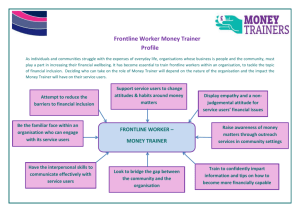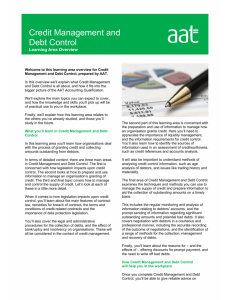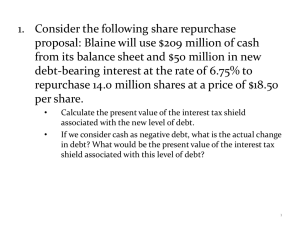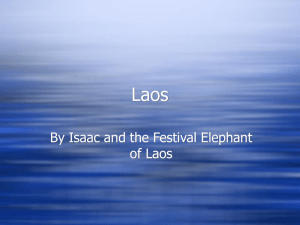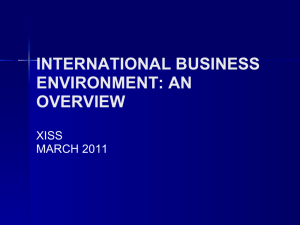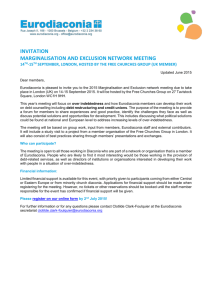GCSEToolkit_EFFECTIVE AID
advertisement
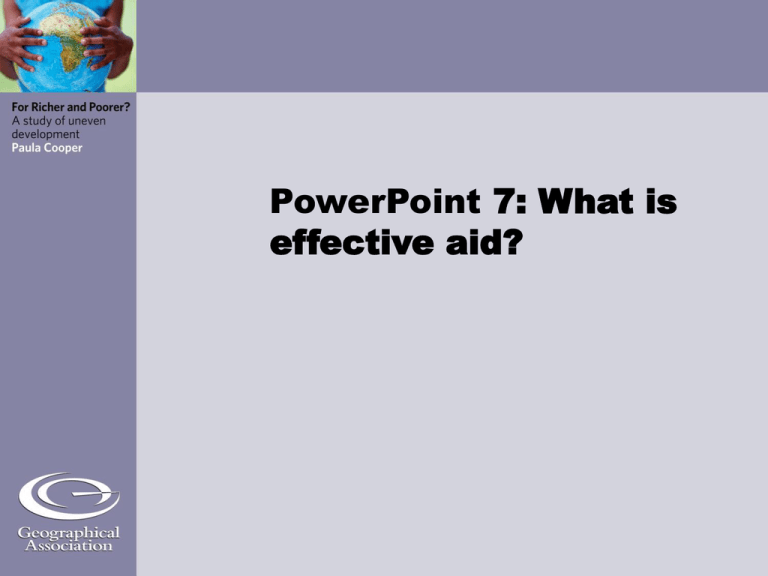
PowerPoint 7: What is effective aid? Aid is ... Support Goods Services Money ... given to those in need Aid matching activity – types of aid Long-term aid Short-term aid Emergency aid Bilateral aid Voluntary aid Bottom-up development Multilateral aid Top-down development Food aid Tied aid Sustainable development Non-governmental organisation Aid matching activity – answers Money, food, goods and services given at times of dire need Edible commodities donated to needy populations Emergency aid Food aid Development that meets the needs of the people today without harming the ability of future generations to meet their own needs An independent charitable organisation that provides aid Aid that is given by a number of countries and organisations, like the United Nations and the World Health Organisation Multilateral aid Aid from one country to another Bilateral aid Non-governmental organisation Sustainable development Aid that provides support for a short time, sometimes when there is an immediate need Short-term aid Foreign aid that must be used in the donor country to buy goods and service from the country giving the aid Tied aid Money collected from the public (and sometimes governments) by nongovernmental organisations Voluntary aid Development projects that are imposed in people from ‘above’ Top-down development Aid that provides support over a long period of time to make changes that last Long-term aid Development projects that start and work from the ‘grass-roots’ level Bottom-up development What people say about aid 1 ‘Huge bureaucracies are financed (with the aid money), corruption and complacency are promoted, Africans are taught to be beggars and not to be independent.’ James Shikwati a Kenyan economics expert Source: Speigel Online International ‘Foreign aid might be defined as a transfer of money from poor people in rich countries to rich people in poor countries.’ Douglas Casey, Classmate of Bill Clinton at Georgetown University Source: http://thoughtsnquotes.blogspot.com/2009/04/sarcastic-quotes-foreign-aid.html What people say about aid 2 ‘In the 1990s dams were built on the Xeset River in the South of Laos to provide electricity and promote economic development. Aid to do this came from Sweden, Norway, the Asian Development Bank and UNDP and China.’ ‘On the Boloven Plateau (in Laos) … a Norwegian consulting firm is benefiting from Norwegian “aid”, a Chinese construction firm is benefiting from Chinese “aid”, and Lao villagers are left to pay the costs of destroyed rivers and livelihoods.’ Chris Lang ‘We do not want them to build the dam. It will badly affect our land and the environment. The official compensation will not be adequate, but we dare not oppose government officials.’ Laos villager Source: www.wrm.org.uy/bulletin/118/Laos.html What people say about aid 3 ‘One approach to a successful aid project just is to immerse yourself in the local community, put local people in charge who are themselves highly motivated, be adaptive and flexible to respond to whatever the local people think about how they can help themselves.’ William Easterly Source: http://blogs.nyu.edu/fas/dri/aidwatch/2009/04/the_secret_to_successful_aid.html Effective aid projects or not? Government funding to Nepal – the UK Government recently gave £65 million to the Government of Nepal to use in its health services Oxfam’s Let Agogo Project in Haiti – gives cows to people who care for the cows and sell on the dairy products to earn income International Aid to Afghanistan – much of the international aid to Afghanistan is paid to foreign contractors for projects that do not meet the needs of the poor What is effective aid like? Types Examples On donor AID Impacts On recipient Benefits Possible problems Migrant remittances greater than aid! The World Bank reports that remittances to poorer countries (money sent home by migrant workers) are now greater than official development aid to those countries. The remittances have grown from an estimated US$73 billion in 1999 to US$290 billion in 2009. Source: http://web.worldbank.org/WBSITE/EXTERNAL/NEWS/0,,contentMDK: 20648762~menuPK:34480~pagePK:64257043~piPK:437376~theSitePK:4607,00.html Charity begins at home ... ... so are you thinking of moving? Which statement do you agree with? and give reasons for your answer Statement 1 Aid creates dependency and will never really take the poorest out of poverty Statement 2 Aid is a powerful way of changing the lives of the poorest for the better Fair Trade • The syllabus says “There is an imbalance to world trade. Efforts such as Fair Trade and trading groups have been made to lessen this” • a) Key Words: Tariff – government taxes on imported or exported goods Quotas – limits placed on the amount that can be produced or im/exported Subsidies - Government money given to people who are making or producing goods. b) c) Debt Abolition and Conservation Swaps • The syllabus says “People have tried to lessen countries debt by (i) abolishing debt and (ii) conservation swaps” • See page 203 in your text book. You need to know what these 2 types of debt relief are. Abolishing debt: is where an organisation (e.g. a bank) or a government cancels the debt of a country Conservation swap: is where a debt is written off for the promise that the country will undertake conservation projects (the example in the book is Costa Rica and the USA) a) b) Fair Trade • Your text book explains all this very well on pages 204-5. We will read through this and then answer some of the questions ….. • Answer questions 1 and 2 and 3 b and c (so NOT 3a and NOT 4)


